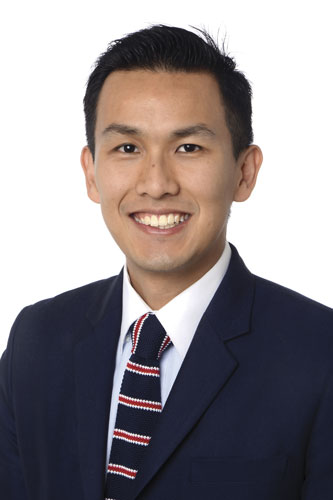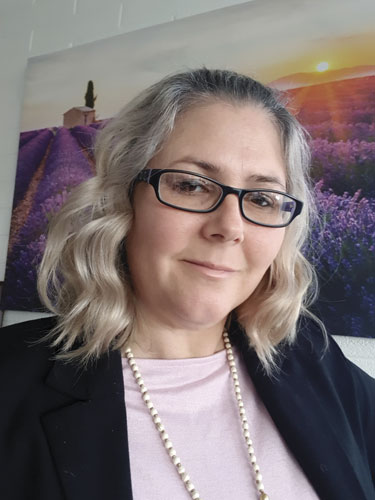 Information and communications technology (ICT) in healthcare can reap significant benefits for clinicians and patients when successfully scoped, designed and implemented. The pitfalls of ICT projects, however, are often due to poor governance, as we have witnessed at all government levels, and that can lead to massive financial blowouts, not to mention wasted opportunities to deliver better health care.
Information and communications technology (ICT) in healthcare can reap significant benefits for clinicians and patients when successfully scoped, designed and implemented. The pitfalls of ICT projects, however, are often due to poor governance, as we have witnessed at all government levels, and that can lead to massive financial blowouts, not to mention wasted opportunities to deliver better health care.
Successful implementations require a bottom-up approach, guided by clinicians on the ground, yet our current experience has seen digital technology usually engineered from the top-down, and the tools and projects that result languish from lack of participation.
If health care revolves around patients and the ICT systems revolve around the clinicians, then Occam’s razor would suggest that the most effective systems should be developed by clinicians.
To get a snapshot of where transformational technology is heading, Medical Forum spoke to some of the leading figures in the industry to hear their perspectives.
The human element
Innovation is not necessarily synonymous with digital technology, yet they are often intertwined, especially in medicine, where algorithms and artificial intelligence (AI) are forging ahead at a rapid pace.
Innovation goes beyond the creation of advanced tools and comes back to their user; how they utilise the benefits to assist clinical decision making and ultimately to provide patients with better care.

That speed, according to Professor Moyez Jiwa, Associate Dean of Notre Dame’s Melbourne Clinical School and formerly of Curtin University, is putting pressure on a critical aspect of care – especially at the primary level – the “art of doctoring”.
“That skill involves getting information from people. If we ignore that, everything else becomes a distraction, a toy, a program in the consultation over and above the actual business of forging a relationship with a patient and getting that information from them,” he said.
Moyez sees technological innovation as an important part of medicine, but cautions on top-down designed applications.
“Innovations can become distractions largely because they’re not fit for purpose. When they are designed by somebody who has not ever stepped in the doctor’s shoes and hasn’t been in a consultation, where you’ve got literally 10 to 15 minutes to make a diagnosis, they are not going to work. The technology, whatever it happens to be, has to fit into those confines.
“We need to design innovations that doctors themselves have tested in real life, not in a randomised control trial, and shown that this actually will speed up the process of making a diagnosis in often very difficult circumstances.”
Moyez describes a doctor-led innovation, of which he was a part, that involved switching the seating position of the doctor and patient in a mock consultation room. The simple act of the patients being provided with the larger and more comfortable chair significantly improved the patient’s experience/
“The impact was enormous, absolutely astonishing,” he said.
The footage from the videoed consultations was analysed for non-verbal communication between the doctors and patients and, according to Moyez, the patients who were given the doctor’s chairs demonstrably changed their behaviour.
“There was much more of a connection. Patients were more open to ideas and accepting information coming from the doctor and more open to saying what was bothering them.”
For all of the advancements with AI in medicine, such as in imaging, where an algorithm can be more effective than the human eye, the intangible elements of the patient-doctor relationship cannot be so easily replicated.
“When it comes to the business of doctoring, when it comes to how we respond to people who are distressed, who are anxious, who are in pain, you can’t beat the best technology we have – the human touch, the human interaction,” he said.
“I’m not decrying robotics or artificial intelligence in other fields, but when it comes to the interaction between the doctor and patient, we can’t do better than what we have already.”
Clinicians lead
The healthcare industry is going through a phase of rapid development in a whole range of areas and the traditional boundaries of where technology and healthcare intersect are being redrawn, says Dr Daryl Cheng, paediatrician and clinical informatician from the Royal Children’s Hospital Melbourne.
Echoing Moyez, Daryl says the successful integration of advanced technology relies on the architects being from a health care background with an interest in technology and vice-versa, so as to ensure the development of these tools actually reflects the clinical needs of the end-users.

He said clinicians sit on an adoption curve – where they sit determines their response to and adoption of new technologies.
“There are those who want technology to sit side by side with care and will use it when they need it, but their interaction is as minimal as possible. Then there is the majority of clinicians who have come to terms with technology as an integrated part of practice and are trying to balance the technological inputs with the rest of the impacts on their clinical workflow,” he said.
“There are also those who love technology and want to make this not only part of their workflow, but their entire workflow.
“Depending on where you are on that continuum, your responses will be different. Take the electronic medical record (EMR). We have a small group of clinicians who refuse to engage with it, they use it because they’re forced to, they log on because they have to, and they are required by their hospital or clinic to document certain things.”
“The vast majority will use it on an everyday basis, they get used to and like some features, they complain about certain things, they know that the EMR is not perfect and they want more out of it.
“Then there’s the group that are really at the forefront of optimising and trying to champion it. And even though it’s not perfect, they try to harness its power and integrate it more closely with their clinical workflow.
“That’s where the gap is at the moment and what’s preventing healthcare technology from really being at a tipping point where we see it as the bread and butter of what we do. Many clinicians will see it as a bolt on, or as an efficiency optimiser, but not the primary way of practising.
“There’s still concern that machine learning, AI and predictive analytics while accurate, may not be fully accurate. It may give false outcomes that don’t have clinical nuance. It may turn medicine into a science rather than an art. And it’s really finding the balance between the human touch, context and clinician’s knowledge of healthcare, and how to blend it all with the power of the analytical tools we now have.”
Daryl also said the top-down engineering approach can foster tolerance rather than acceptance of tech tools, which was a rational response to what was considered a good solution in theory, but unworkable from a clinical workflow perspective.
“We might have a tool say in an EMR or a predictive analytical score which doesn’t consider the nuances of how we want to use it in daily practice. That’s why the adoption is poor,” he said.
When a technology project is delivered by someone who speaks the language of tech and clinical practice, there is a significant difference to the adoption, engagement and development of the product or solution.
However, technology is not quarantined from the silos that inhibit other areas of medicine.
“You may have one communication app between nurses and doctors, another between doctors, another for allied health, another for between clinical and service staff. You end up with 10 different ways of communicating, which in any other corporate organisation outside of health care would not be acceptable. There would be one platform for everyone to communicate,” Daryl said.
The Royal Children’s Hospital Melbourne has deployed an integrated electronic medical task board (EMT) – an electronic whiteboard for the nurses to record non-urgent things, and to communicate to the specific doctors.
“It’s very helpful, especially for after-hours care in the hospital where you may be covering patients that you don’t usually see during the day,” Daryl said.
When the hospital transitioned to an EMR, they integrated the task board into it, which according to Daryl provided staff with unprecedented access to patient history.
“At a glance you can see anything about any patient that has been tasked.”
The integrated EMR/EMT proved to be hugely beneficial with a high uptake of users. In the first three years since it was deployed, over 135,000 tasks had been requested, with anywhere between 50 and 75 tasks being generated an hour.
With so many tasks being requested, the hospital has been able to analyse the data to measure demand and predictively scale resources, which has been one of the unintended benefits of this type of integrated system.
Daryl offers an example of the system in practice.
“We noticed that in the cardiology ward, nurses were continually requesting orders that were not particularly appropriate. And that allowed us to push for some education to manage that better.
“We’ve also been able to rejig the workload. The cardiology and oncology wards have a particularly high workload with a number of tasks between specific hours because the daytime staff have gone home and extra coverage is needed. Being able to respond to the demands just by looking at the data has been something we’ve not been able to do before we had the EMT integrated into the electronic medical record.”
Daryl believes widespread adoption of technology will come when clinicians realise the significant overall benefits that expand beyond what they’re able to do currently, and how that translates to better health care and reported patient outcomes.
“That’s the challenge, he said. “We can develop a system that predicts when a child is going to deteriorate from sepsis or infection but until we have the clinical data showing its benefit, its effectiveness and timeliness and that it’s more efficient than our current way of doing things, it won’t fly. Significant patient and clinical benefits such as preventing morbidity or mortality will be the significant driver for acceptance.”
Daryl says the new EMR/EMT system at the Royal Children’s is doing just that.
“The mortality rate has dropped by greater than 20%. These types of outcomes show technology is not only making health care more efficient, but safer and better for patients.”
Other implications
Myriad issues can arise with EMR implementation, according to Associate Professor of Digital Innovation in Health and Health Pedagogy at the University of Tasmania, Dr Kerryn Butler-Henderson.
“The main factor is good project management, including strategy, communication, risk management, consultation, and evaluation. Often when things go wrong, you can identify that one of these things has not been done well,” she said.
The sticking point is often one of engagement.

“Not everyone has to be on the project team, but all stakeholders should be engaged, and the project team should ensure it’s done at the right time. I’ve seen large scale implementations held up by months simply because the right questions were not asked of the right people,” she said.
“Conversely, I’ve seen small- and large-scale projects go very well where there has been strong and continuous engagement and communication with all stakeholders throughout the project.
“We need to stop seeing digital health as a project, a time-limited activity with a definitive start and end date. Even once a system has been implemented, there is system management and maintenance until eventually a system is decommissioned and the cycle starts again with the new system.
“Viewing digital health as a time-limited activity, and budgeting it as such, contributes to the barriers and its siloing, when it should be ubiquitous in-service provision. In a system that is still separated into federal versus state-funded services, and focused on activity instead of outcomes, the effectiveness of digital health will continue to be constrained.
“Innovation is observed in those who transcend these boundaries, with reportable positive outcomes at the individual and population level observed. A good example is where Telehealth is used to support someone and enabled them to return to their remote location much earlier than in the past. Acute and primary health care providers and the individual can communicate virtually to monitor progress, and the individual’s quality of life is improved.
“However, our biggest missed opportunity is in closing the gap in primary health care. In a country as geographically large as Australia, it is the structure of our health system and poor telecommunications that are creating the silos and barriers to innovation driving system performance.”
Digital workforce
Kerryn said a digitally capable health workforce was imperative to enable innovation in the sector.
“Currently, we have disparate levels of digital capabilities with the literature showing that there is a generational impact. Our younger health care professionals are largely more digital capable, but as educators, we need to support and increase these capabilities, to produce capable and competent graduates, she said.
“These capabilities are not related to using a certain system, but in their soft skills. Our research has shown that increasing a digital worker’s attributes across four areas – awareness, creativity, agility, and learning orientation – will enable them to be prepared better for digital service provision.”
To achieve this, we may need a specialist digital health workforce beyond what we already have.
“Currently, many areas of this workforce do not have or require formal qualifications, and many people simply slide into roles that they have an interest in, as opposed to a formal career structure. The specialist digital health workforce is undersupplied, underdeveloped, unregulated, and unmonitored,” she said.
“Government, industry, educators, and peak bodies need to continue to work towards the formalisation of this workforce to support digital health into the 21st century.”

